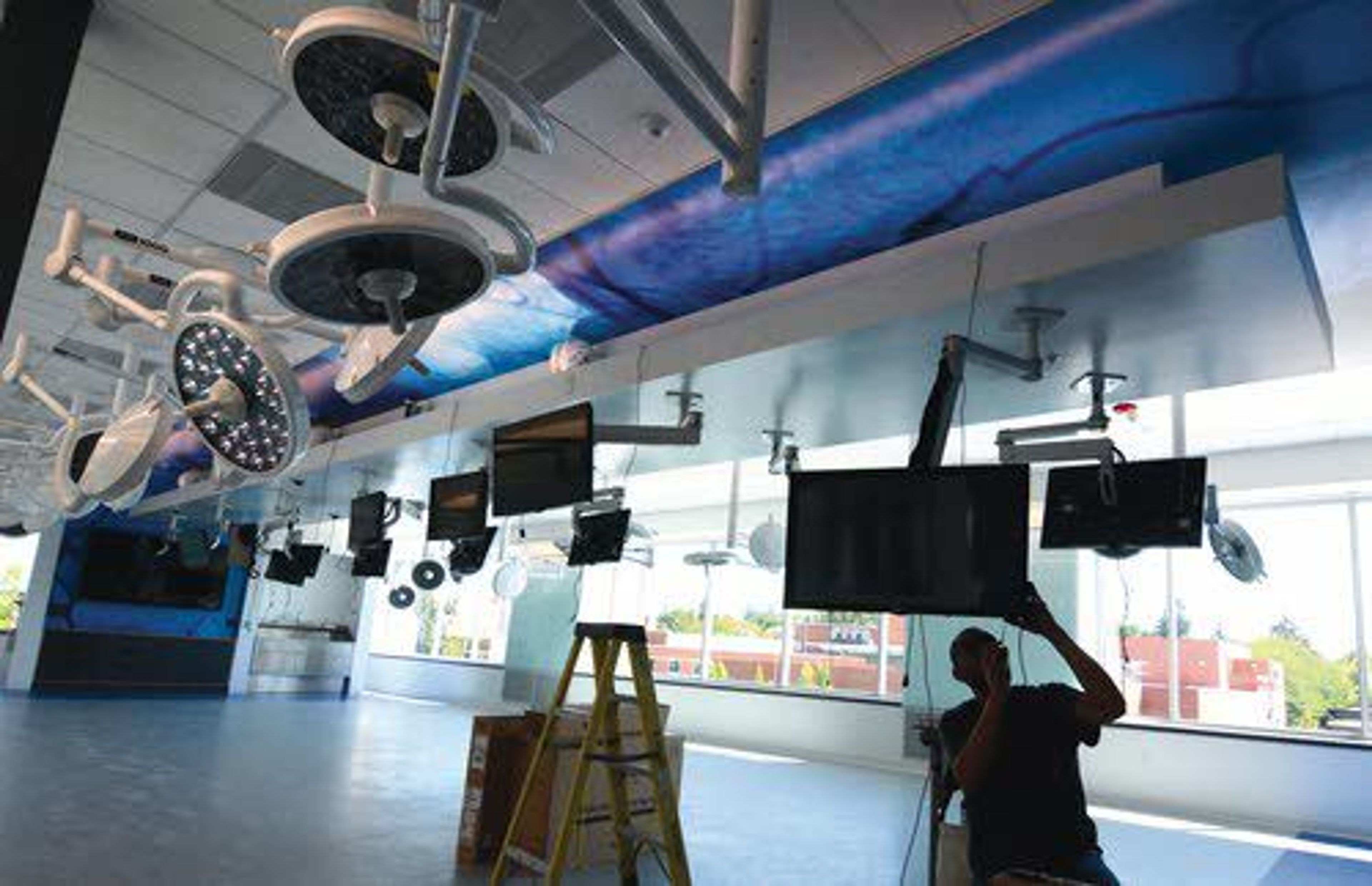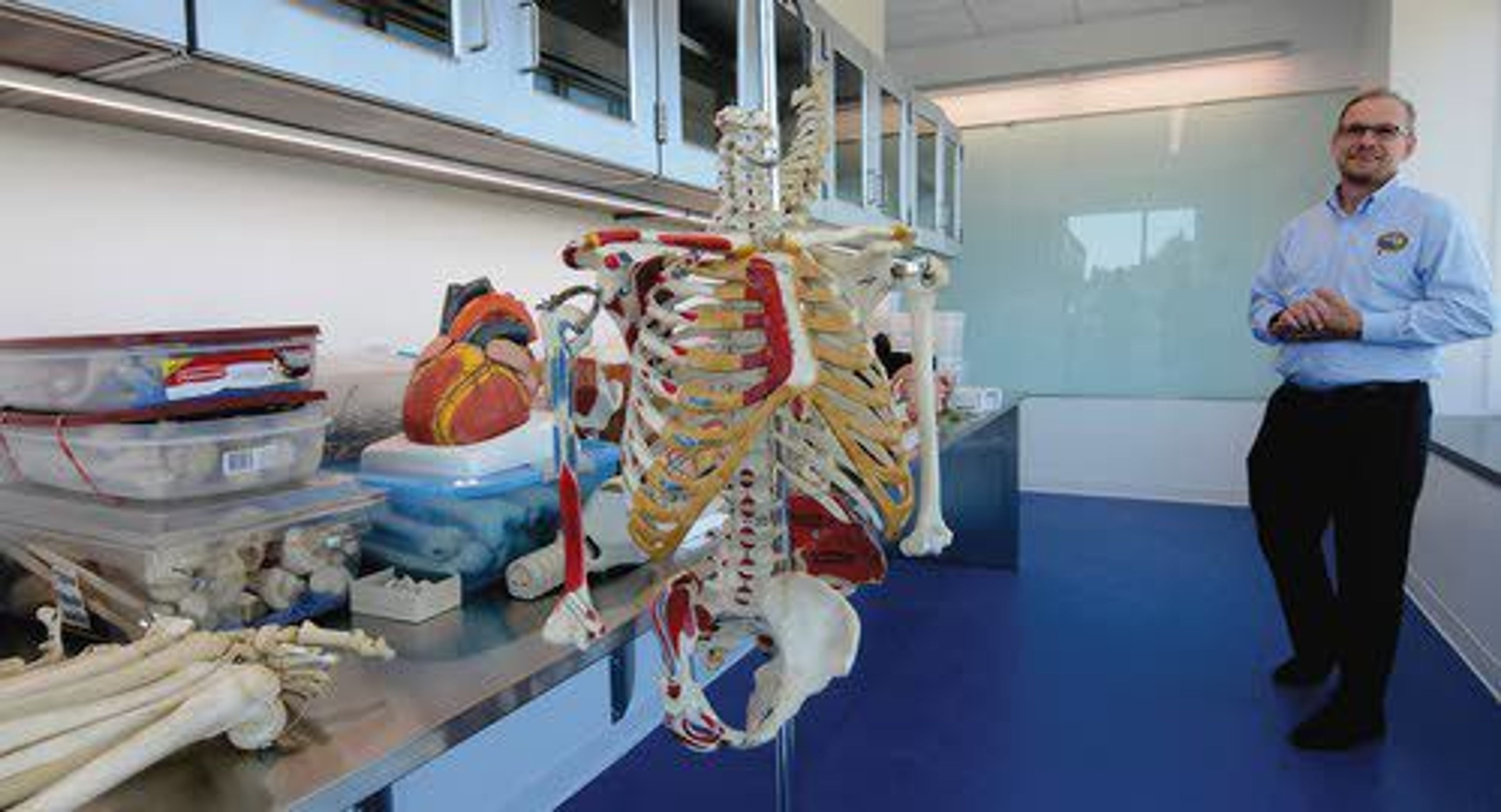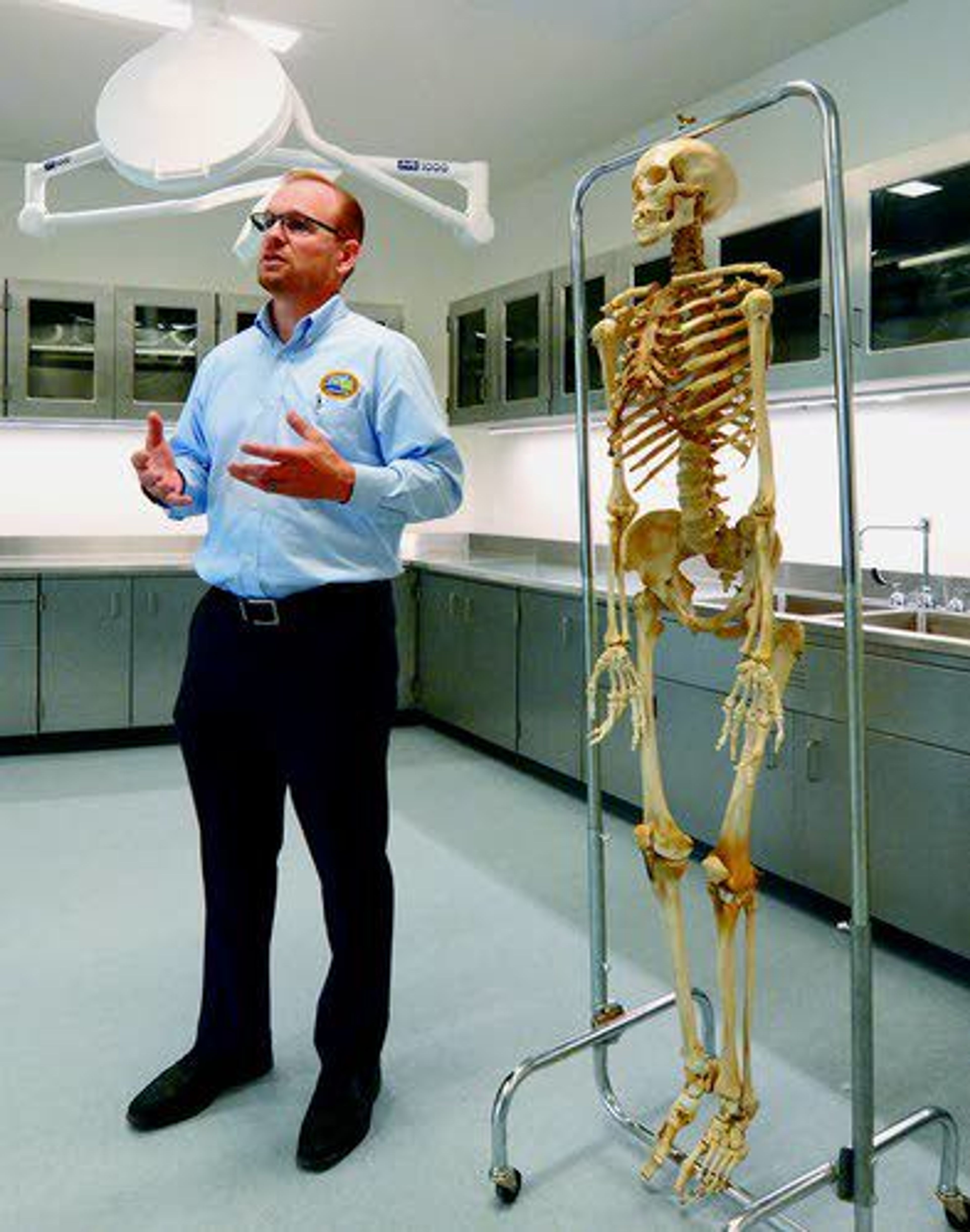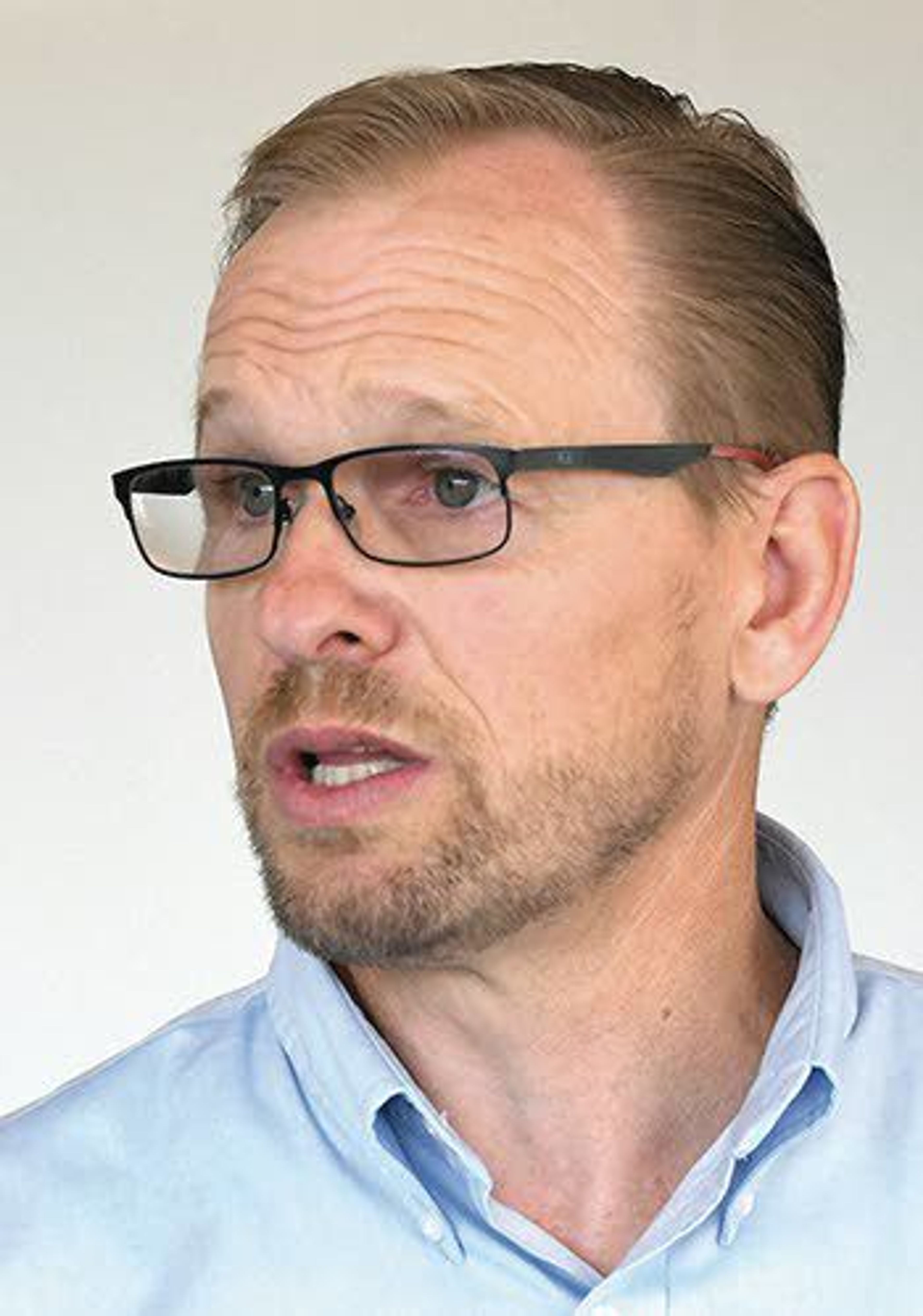No bones about it: lab gets high marks
University of Idaho's new anatomy lab will have open house today
MOSCOW - Jeff Seegmiller may be a bit biased, but he thinks the University of Idaho's new anatomy lab is top of the line.
Seegmiller recently was named director of UI's WWAMI Medical Education Program. He's seen his share of labs over the years, and knows they're often crowded, poorly lit and poorly ventilated.
None of that will be a problem in UI's new lab, which was built in collaboration with Gritman Medical Center.
"I've taught in a lot of labs, and this is one of the best in the world," Seegmiller said proudly.
The 7,000-square-foot facility opens for students in August. The university will hold an open house from 4 to 7 tonight to give community members an opportunity to see it for themselves.
"We're excited to showcase something that would be amazing anywhere in the country," he said.
WWAMI is a regional medical education collaboration among Washington, Wyoming, Alaska, Montana and Idaho. Students receive two years of medical education in their home states, followed by a third year at the University of Washington's School of Medicine in Seattle.
Historically, UI's WWAMI students used the anatomy lab at Washington State University in Pullman for their training. However, when WSU pulled out of the program to open its four-year medical school in Spokane, UI found itself in need of a lab of its own.
The lab takes up about half of the third floor of the new Gritman Medical Office Building, which is on Main Street across from the hospital. The high-tech space includes a classroom and common area, as well as the lab and adjacent morgue.
The anatomy lab itself has 14 teaching stations. Each will be equipped with a gurney, surgical lights and touch screens. There also are two large TV screens at either end, where instructors can display images from any of the stations using cameras strapped to their foreheads.
The entire floor is surrounded by large bay windows, providing ample natural light.
"The beauty of this lab is amazing," Seegmiller said.
Four students will be assigned to each station. They'll spend the year dissecting a cadaver that was willed to the University of Washington medical school.
"This is (a student's) introduction to their first patient," Seegmiller said. "Although the person is deceased, they've donated their body to help someone learn. Students treat them with respect."
Besides learning how to use different surgical and medical tools, he said, the basic purpose of the anatomy lab is to help students understand the various structures of the human body, ranging from the skeleton and musculature to the nervous system and internal organs.
"Anatomy is the foundation of the health sciences," Seegmiller said. "It hasn't changed; I can pull an ancient textbook and still see the same terms being used. We're teaching those fundamentals and helping students navigate the human body - but we're doing it in a state-of-the-art way."
Tonight's open house starts with a brief presentation at 4 p.m., with tours to follow.
---
Spence may be contacted at bspence@lmtribune.com or (208) 791-9168.












